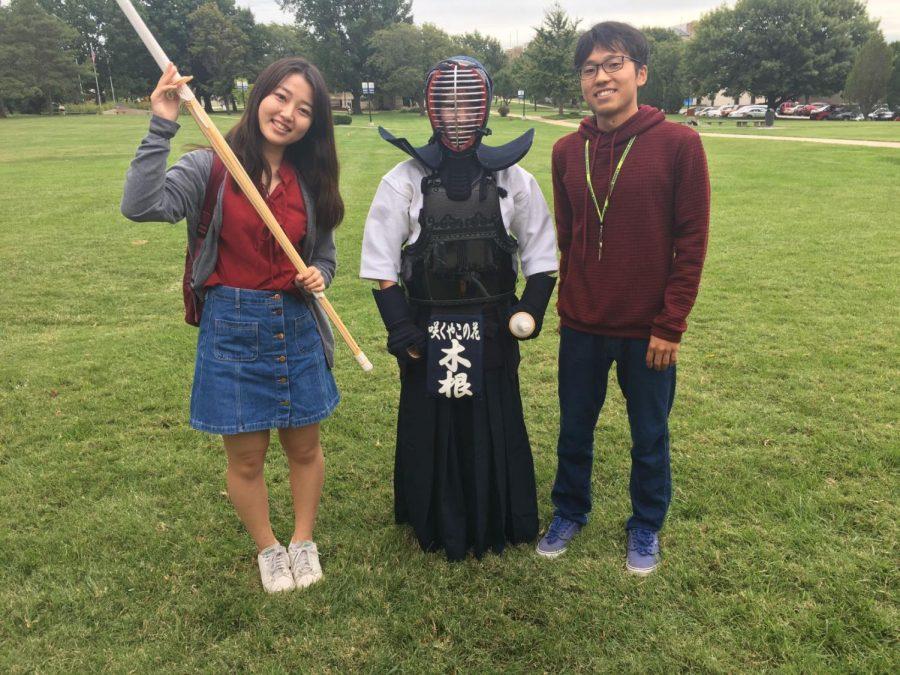Kendo makes its way to Washburn’s campus
October 24, 2017
The way of the sword has silently slid into Washburn.
Kendo, the Japanese art of samurai swordsmanship, is the latest club available at Washburn. In it, members practice footwork and how to fight with wooden swords in traditional Japanese style.
“WU has about thirty Japanese students,” said Andy Vogel, faculty advisor for the club. “They came to me and wanted to start a club. Our team captain, she’s passionate, [and] has trained extensively in kendo. Kendo is not just for Japanese students, we would also like to teach the way of the sword to the domestic students.”
Kendo, which is a competitive sport today in Japan, has a complex history. Originally formed as a way to train warriors in the art of swordsmanship, kendo was temporarily banned during the aftermath of World War II. At the time, displays of Japanese militarism or nationalism were prohibited, meaning this treasured aspect of their culture was temporarily suppressed. As a result, kendo is now regarded as much of a sport as it is a martial art, and is taught in countries all over the world.
“It has long history, [and] we think it’s important,” said Sayaka Kine, junior criminal justice major and team captain. “Many people, like children, play kendo. They can choose soccer, baseball, kendo [or] judo. It’s a major sport in Japan, many elderly people play kendo. It is a sport required to become a police officer in Japan. That is why I started kendo, because I wanted to become a police officer.”
Kine said that the American and Japanese law enforcement training programs differ greatly.
“Wrestling is more important than the shooting,” said Kine. “We train the officer [more so in wrestling judo.] Kendo is applied to baton. We play kendo a lot when people are in the police academy.”
In Washburn’s kendo club, the sport is practiced with bamboo swords called shinai and armor called bōgu, which covers one’s head, hands and stomach. Much like fencing in Western culture, the goal is to land a hit upon your opponent in specific areas of their body to earn points.
“Sometimes matches go for 30 seconds, or half an hour, just to get that one point,” said Vogel.
While the competition schedule is currently being drawn up, finding a location continues to be the biggest hurdle for the team to overcome.
“We were accepted as a club, but we are having difficulty getting a place to practice,” said Kine. “I talked to the gym, they accepted us on the basketball court, but they did not accept us playing kendo there, so we can just practice foot movement. We cannot hit each other right now. We need special permission, so we are now talking to the student government. They haven’t responded.”
After finding a permanent practice room, Vogel hopes that the next step would be to get the Washburn community to engage with kendo and treat it with the same respect as any other sport currently available on campus.
“We hope people would embrace us and come and watch our battles,” said Vogel.



